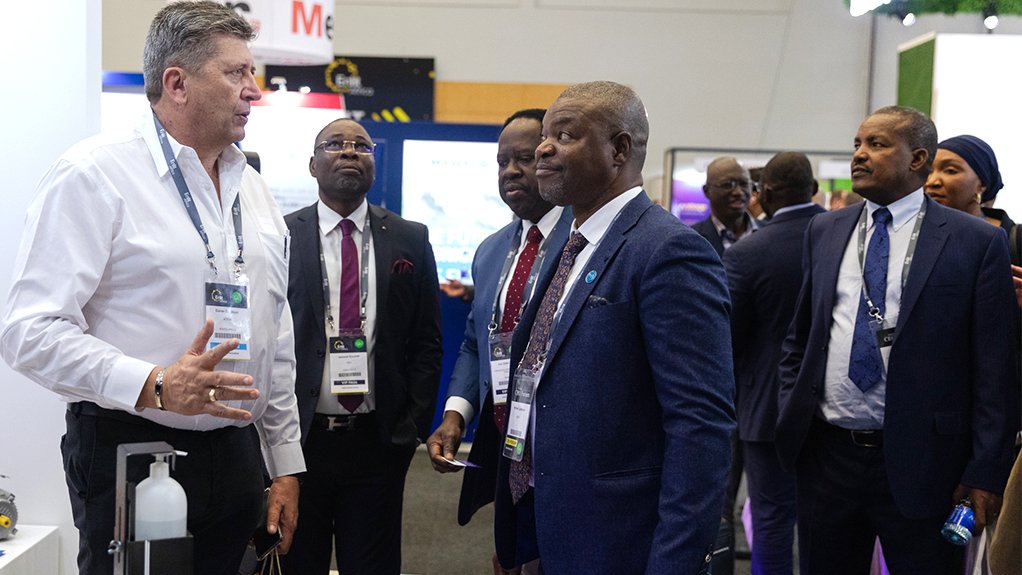With this year’s Enlit Africa event themed ‘The Multidimensional, multi-sectoral energy transition’, Enlit Africa content head Claire Volkwyn says this was the natural progression following last year’s theme of collaboration.
The theme was inspired partly by the focus on the South African just energy transition (JET), and the associated JET Investment Plan, which encompasses not only traditional power generation, transmission and distribution but also mobility and alternative fuels by way of hydrogen.
“The JET is not just impacting on the power sector, however the implications are being felt across multiple sectors, and policy such as the Carbon Border Adjustment Mechanism, will have a far-reaching impact on any business in South Africa that exports to the European Union,” she adds.
Enlit Africa returns to Cape Town this month, where the conference and expo will address the challenges of accessing energy in Africa. The conference will be held from May 16 to 18.
Energy access in Africa is still a concern with figures suggesting that between 700-million and 900-million people on the continent still do not have access to electricity.
Funding intended for energy access was, naturally, redirected during the worst of the Covid-19 pandemic, but some of the energy access gains made before the pandemic were lost, owing to the devastating impact on employment.
“Some people just could not afford to use the electricity or modern energy sources they now had access to,” adds Volkwyn.
“At Enlit Africa, we want to shine a spotlight on the need to increase access at pace and showcase how the energy transition is not only an opportunity to transition to cleaner power generation but also bring more than 700-million people along with us by speeding up their access to not only energy but clean energy,” she continues.
Urban Access
Contrary to popular belief, the issue of energy access is not limited to only rural areas in Africa.
“Urban energy access is increasingly a challenge and one that also needs to be highlighted. We are highlighting access by bringing together key stakeholders, financiers and developers to discuss the importance of energy access in the context of affordability and reliability – and considering ways in which mini and microgrids can facilitate not only access to energy but also economic development.”
The conference attracts delegates from around the world. The expo floor will have 250 suppliers of expert technologies and services, including country pavilions from Belgium, Brazil, Canada, China, Germany, India, Taiwan and the US.
Electricity Minister Kgosientsho Ramokgopa has been confirmed as one of the keynote speakers, together with State-owned power utility Eskom acting group chief executive Calib Cassim.
Having government officials in the same room as big industry players in the energy space is important for the conference: “I believe it is vital that the public and private sectors come together at the conference,” says Volkwyn.
Meanwhile, she mentions that there is a misconception that Africa is a high-risk investment opportunity, owing to, among other things, a disconnect in terms of the expectations of the private and public sectors.
“Having the opportunity to speak with one another in a less formal environment will allow for a lot more listening and less defending of positions. Africa is rich with opportunity. Enlit brings the public and private sectors together to discuss these and find common solutions.”
What to Expect
Event organisers VUKA Group, the organisers of Enlit Africa, announced its partnership with the South African Energy Storage Association (SAESA) last year.
This collaboration positioned Enlit Africa as the continent’s first platform for integrated storage and alternative power solutions.
“Last year, we were very pleased to launch the first Fundamentals of Battery Energy Storage for Beginners guide, aimed predominantly at the South African commercial and industrial sectors. Much of the content, however, addresses challenges which apply to residential installations as well.”
Volkwyn adds that the response to the guide was “phenomenal and we are now working with SAESA and the many wonderful people who helped to make the guide a reality” to update the content and expand on the information of the 2022 edition.
In support of that, she notes that the programme covers many of the technical aspects of battery energy storage, particularly the role that storage can play for not only the generation and/or commercial and industrial sectors but also for transmission and distribution utilities.
Meanwhile, Enlit Africa has maintained some of the digital elements put in place for those unable to attend in-person events during the Covid-19 pandemic.
“While the desire to return to in-person engagement has been overwhelming, this year we will again broadcast our keynotes, as well as our interviews with key industry players. We are cognisant of the way in which people engage with content now and while not providing direct digital access to the event, we will be sharing content from the discussions post-Enlit Africa and across all our social media platforms.
”
Edited by: Zandile Mavuso
Creamer Media Senior Deputy Editor: Features
EMAIL THIS ARTICLE SAVE THIS ARTICLE
ARTICLE ENQUIRY
To subscribe email subscriptions@creamermedia.co.za or click here
To advertise email advertising@creamermedia.co.za or click here















